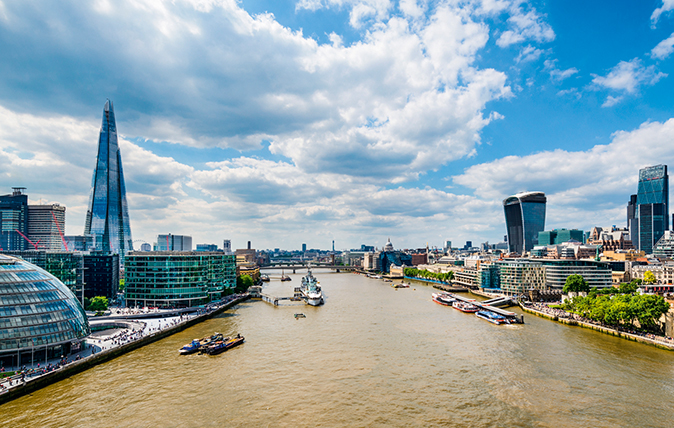New build: London property guide
As new build developments continue to spring up throughout London Country Life talks to the experts to find out whether these apartments are a wise buy


New build London property developments continue to spring up all over town - but are they wise buys? Will they hold their value? ?Arabella Youens talks to three London property experts
Guy Meacock, Prime Purchase (020–7881 2392)
‘Like so much in life, in order for things to work, you need a hierarchy and, in London, that means a balanced built environment— a range of housing stock, schools, shops and community spaces that cater for needs across the board.
The new-build sector isn’t answering that need, in part because there’s a significant premium to pay compared with the second-hand market—some apartments come to the market at double the relative value of second-hand stock with high service charges on top.
According to Savills figures, we’re going to need an extra 1.1 million private rented homes over the next five years and, with the recent tax changes by the Chancellor, the principle of putting money into property in London—where a good proportion of these properties are needed—has been watered down.
The outcome of that is that there’s less available in the private rented sector, where there is a dire need, and rents will inevitably go up. It’s hard to see where you can improve the market holistically without a detrimental impact somewhere along the line—margins are that tight.
These changes are already impacting on other urban centres in the South; markets such as Cambridge have outperformed central London in recent months and I suspect that will continue as young people are driven by affordability.
Sign up for the Country Life Newsletter
Exquisite houses, the beauty of Nature, and how to get the most from your life, straight to your inbox.
The key point is that London needs to watch itself: it gets out of jail as long as the population keeps growing, but that may not always be the case if people are no longer choosing to live here. If young Britons desert the capital, it’ll fundamentally change the profile of the city.’
Jonathan Mount, The Buying Solution (020–7591 2645)
‘Wherever you look in London, from Kensington and Chelsea to Battersea and Nine Elms and beyond, the new-build property market is consistently achieving large premiums in comparison to secondary-market homes in the same location. The danger is that, in some of these areas, there are huge numbers of units in the pipeline and there’s a real risk of oversupply, which will undoubtedly impact on pricing and erode the premiums.
One reason why this problem has become more acute is the ongoing ability for purchasers to buy off-plan and assign the contract to a different buyer prior to completion (although this isn’t possible in all developments). This process is commonly known as “flipping a contract” and is one of the biggest reasons that the property market disintegrated in Dubai in 2008.
Once you combine the offplan sales with the resales that result from “flipping”, the number of properties available to buy in some new-build schemes or locations is staggering and, in my view, this practice should be eliminated: if you don’t intend to live in the property or rent it out following completion, then you shouldn’t buy it.’
Charlie Ellingworth, Property Vision (020 7808 8986)
‘The new-build market is currently in a state of flux, with a tricky combination of negative sentiment, falling emerging market currencies, spiralling building costs and a Stamp Duty headwind.
Changes in the market like this provide some great opportunities for astute buyers. When any developer can sell any old rubbish to any unsophisticated buyer in Asia, there are very few deals to be done. With a softening market, it’s possible to get some attractive distressed deals, either from developers or an investor who is faced with the installment payments on an asset that is now underwater.
The trick is working out which is the development that’s going to hold its value and increase as the finished article emerges and then what units to buy within that development at the right price. There is plenty that you wouldn’t want to buy at any price that the developer or investor would sell at—even though that might appear cheap compared to recent history. Rubbish is rubbish, whatever the price.
The things we advise our clients to focus on in particular are location—the valuation difference can be huge within a hundred yards, let alone half a mile—transport and how long you’re going to have to live in a building site before it’s habitable.
It’s crucial that you know what your view is going to be: there are many who thought they were buying a river view when the reality is that, to enjoy such a view, you’d have to stick your head out of a window and look sideways.’
-
 'Monolithic, multi-layered and quite, quite magnificent. This was love at first bite': Tom Parker Bowles on his lifelong love affair with lasagne
'Monolithic, multi-layered and quite, quite magnificent. This was love at first bite': Tom Parker Bowles on his lifelong love affair with lasagneAn upwardly mobile spaghetti Bolognese, lasagne al forno, with oozing béchamel and layered meaty magnificence, is a bona fide comfort classic, declares Tom Parker Bowles.
By Tom Parker Bowles Published
-
 Country houses, cream teas and Baywatch: Country Life Quiz of the Day, April 24, 2025
Country houses, cream teas and Baywatch: Country Life Quiz of the Day, April 24, 2025Thursday's Quiz of the Day asks exactly how popular Baywatch became.
By Toby Keel Published
